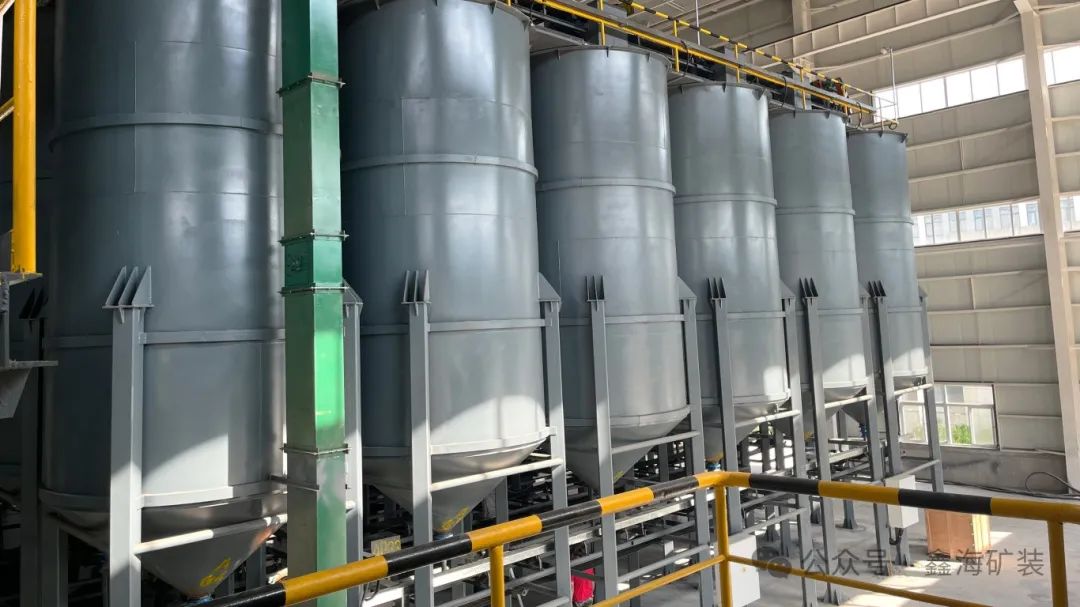Lithium Ore Smelting Process: Current Status and Future Pathways
2025-03-28 Xinhai (621)
2025-03-28 Xinhai (621)
If you have any questions, please contact us through the following ways, we will give you more and better assistance!

Driven by the global wave of new energy, lithium, known as "white oil," has become a core raw material for power batteries and energy storage technologies. The smelting process of lithium ore, as a key step in efficiently extracting lithium from natural resources, directly impacts the sustainable development of the new energy industry. Currently, lithium ore smelting processes, represented by lithium mica and spodumene, coexist in multiple technological pathways. However, facing increasing market demands and environmental pressures, process optimization and innovation are imperative.
The lithium mica smelting process has evolved from traditional active lime methods to mineral-salt composite technology. The early active lime method involved mixing lithium mica with lime for roasting. While simple in equipment, it achieved a low lithium recovery rate of 65%–73% and generated significant tailings, leading to resource waste. The subsequent strong acid method, which dissolves ore with sulfuric or hydrochloric acid, improved lithium extraction efficiency but posed safety risks and equipment corrosion due to the use of strong acids and alkalis, hindering large-scale production. The breakthrough of the mineral-salt composite process marked a turning point. By mixing minerals with salts for multi-stage roasting, it not only enabled industrial-scale production but also significantly increased lithium recovery rates while reducing auxiliary material usage and tailings, balancing efficiency and environmental protection.

The spodumene smelting process centers on rotary kiln acid roasting. After grinding and drying, the concentrate undergoes multi-stage roasting and reacts with sulfuric acid to form acidified material, which is then processed for lithium extraction. Although complex, this mature technical system remains the mainstream path for spodumene lithium extraction. However, its high energy consumption and substantial equipment investment require further optimization through technological upgrades.
Despite the relative maturity of existing processes, the industry still faces multiple challenges. First, there is considerable room for improving lithium recovery efficiency. For instance, the active lime method suffers from incomplete mineral phase reactions, leading to lithium loss, while the strong acid method is limited by chemical reagent utilization. Second, environmental pressures compel process innovation. Traditional processes, with massive tailings stockpiles and exhaust emissions, threaten ecosystems, urgently necessitating green transformation through technologies such as waste heat recovery and ultra-low emission facilities. Additionally, regional differences in lithium ore resources demand more adaptable processes. For example, China’s lithium deposits, predominantly granite-type tantalum-niobium-lithium mica ores with complex compositions, require tailored smelting solutions.

Looking ahead, lithium ore smelting processes will focus on three themes: efficiency, low-carbon practices, and circularity. Equipment large-scale production is a primary trend. Scaling daily clinker output from 300 tons to 1,500 tons reduces unit energy consumption and land costs while enhancing competitiveness. Integrated environmental technologies, such as flue gas desulfurization, denitrification systems, and waste heat recovery devices, will become standard, pushing smelting toward "near-zero emissions." Resource utilization of tailings and slag is another priority. Extracting residual valuable elements or converting waste into construction materials can mitigate resource waste and environmental pressure.
Under the "dual-carbon" goals, innovation in low-carbon processes is critical. For example, developing low-temperature roasting to reduce energy consumption or adopting renewable energy for smelting will significantly lower carbon footprints. Additionally, composite lithium extraction processes for lithium mica and spodumene, alongside intelligent control systems, will inject new momentum into the industry.
Lithium ore smelting is not only a arena for technological competition but also a test of sustainable development. From extensive production to refined operations, from pollution control to a circular economy, each innovation strengthens the foundation of the new energy industry. Only through continuous process advancement can the industry secure a leading position in the global lithium battery race and power a greener future.